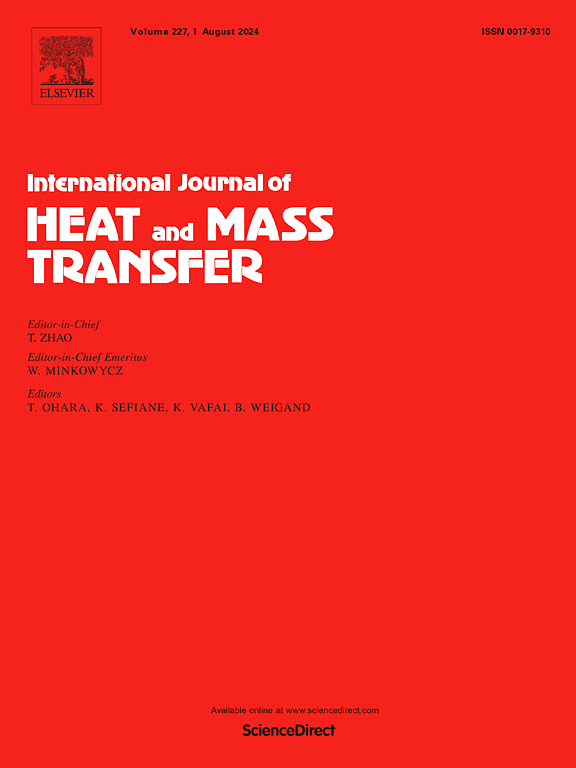蜂窝结构和基底导热性对缩短高温接触时间的协同效应
IF 5
2区 工程技术
Q1 ENGINEERING, MECHANICAL
International Journal of Heat and Mass Transfer
Pub Date : 2024-10-29
DOI:10.1016/j.ijheatmasstransfer.2024.126357
引用次数: 0
摘要
近年来,人们通过调节表面润湿性或引入精心设计的拓扑结构,对液滴在不同温度下的快速分离进行了广泛研究。它在许多工业领域都具有实际意义,如液滴冷凝、自清洁等。然而,单一材料无法满足广泛的应用需求。表面结构和基底热导率对高温下接触时间调节的协同作用尚未被揭示。在这项工作中,我们用四种不同的基底制备了分层非互连蜂窝表面,并探索了不同温度下的液滴动力学。在蜂窝表面可以观察到独特的薄饼弹跳现象,固液接触时间大大缩短,这是因为在非互联结构中产生了强大的蒸汽压。我们还发现,温度和基底导热系数的增加都会缩短液滴在蜂窝表面的接触时间。因此,我们推测,通过合理使用基底材料和拓扑结构,可以调节液滴在高温下的动力学特性,这可能会在高频喷雾冷却等热相关领域得到广泛应用。本文章由计算机程序翻译,如有差异,请以英文原文为准。
The synergistic effect of honeycomb structure and substrate thermal conductivity on the reduction of contact time at high temperatures
Rapid detachment of droplets at different temperatures has been extensively studied in recent years by regulating surface wettability or introducing well-designed topological structures. It is of practical significance in many industrial fields such as dropwise condensation, self-cleaning, and so on. However, a single material cannot satisfy a wide range of applications. The synergistic effect of surface structure and substrate thermal conductivity on the regulation of contact time at high temperatures has not been revealed. In this work, we prepare hierarchically non-interconnected honeycomb surfaces with four different substrates and explore droplet dynamics at different temperatures. The unique pancake bouncing can be observed on the honeycomb surface and the solid-liquid contact time is largely shortened, which is aroused by the generation of strong vapor pressure in the non-interconnected structure. We also discover that both the increase in temperature and substrate thermal conductivity can reduce the contact time of droplets on the honeycomb surface. Therefore, we speculate that droplet dynamics at high temperatures can be modulated through the rational use of substrate materials and topological structure, which may find wide applications in thermal-related fields, such as high-frequency spray cooling.
求助全文
通过发布文献求助,成功后即可免费获取论文全文。
去求助
来源期刊
CiteScore
10.30
自引率
13.50%
发文量
1319
审稿时长
41 days
期刊介绍:
International Journal of Heat and Mass Transfer is the vehicle for the exchange of basic ideas in heat and mass transfer between research workers and engineers throughout the world. It focuses on both analytical and experimental research, with an emphasis on contributions which increase the basic understanding of transfer processes and their application to engineering problems.
Topics include:
-New methods of measuring and/or correlating transport-property data
-Energy engineering
-Environmental applications of heat and/or mass transfer

 求助内容:
求助内容: 应助结果提醒方式:
应助结果提醒方式:


